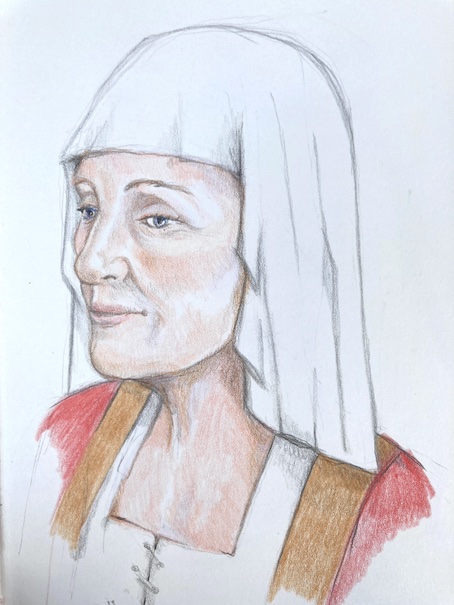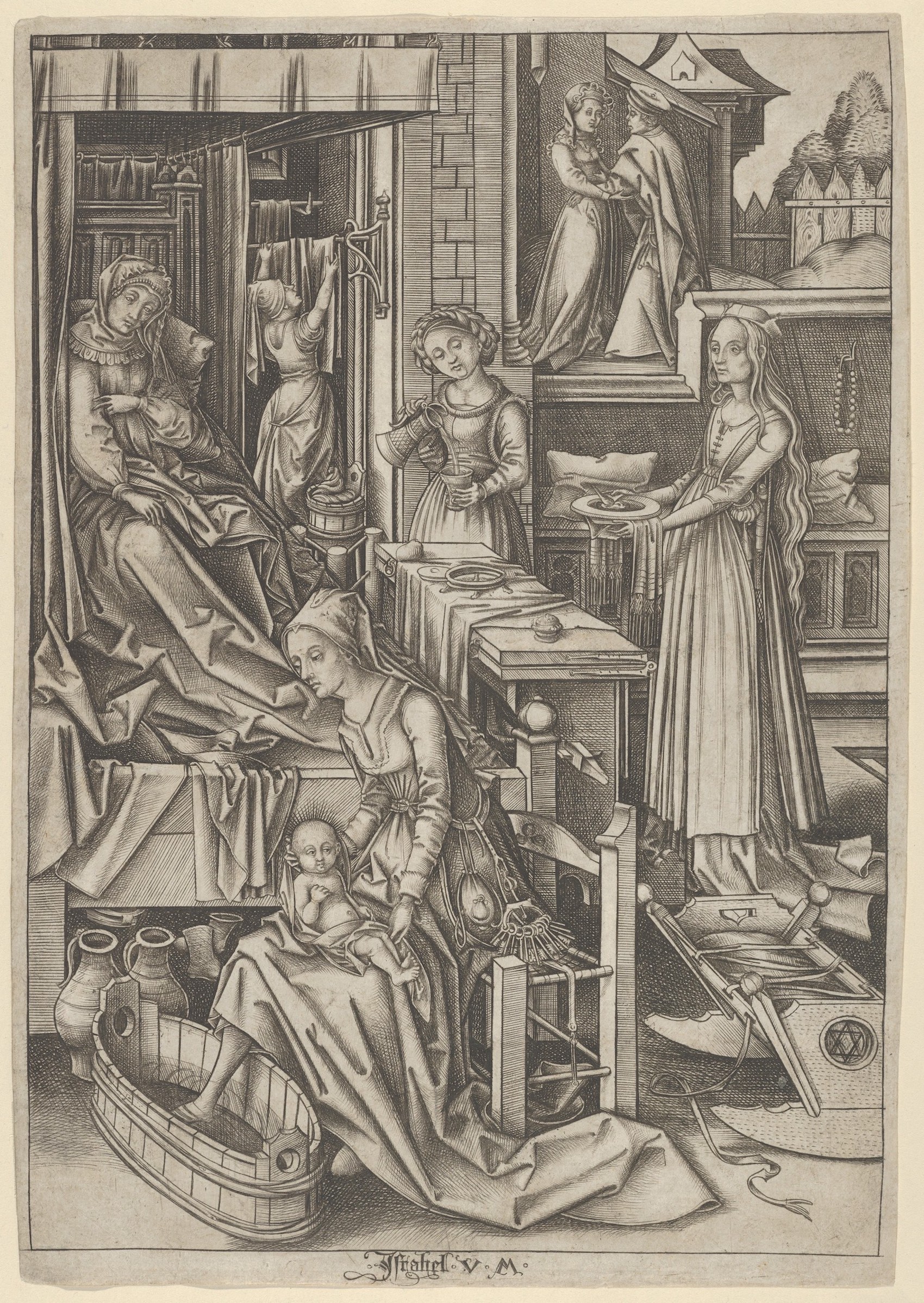Women’s History Month – Jo Romero
The Wars of the Roses: 6 Women the History Books Forgot
Joan Canynges
William Canynges, the wealthy merchant and mayor of Bristol, is well known, but his wife Joan is rarely acknowledged. The couple lived near St Mary’s Church Redcliffe in a large house with a watching tower, where they could check the landing of Canynges’ ships carrying wine, spices and other items from abroad. William was known to Henry VI and Edward IV and greeted the Yorkist king when he arrived in Bristol shortly after his accession in 1461. Joan would have supported her husband in his business, chasing up debts, delivering paperwork and also looking after the household. On his visit, the king stayed at the Canynges’ house and Joan’s role would have included ensuring everything went smoothly for their royal house guest. An early twentieth-century painting by Ernest Board commemorates Edward’s stay at the Canynges’, although it is not known if Joan is depicted in the scene. Joan’s effigy can be seen in St Mary’s Church, lying next to that of her husband.

Gonnora Dowtton
We don’t often stop to think of the consequences of the Wars of the Roses on religious women, but they were affected. Gonnora Dowtton was the abbess of Delapré Abbey, taking up the post in 1459. On 10 July 1460 the nuns’ prayers were halted as the sound of fighting broke through the stone walls. Yorkist and Lancastrian soldiers clashed in the fields adjacent to the abbey, some drowning in full armour in the nearby River Nene. Leland stated that some of the war dead were buried in the abbey grounds and if this is correct, Gonnora would have overseen these burials. She continued as abbess at Delapré and died in 1481.
Elizabeth Venour
A woman of local justice and directly answerable to the king, Elizabeth Venour was the Warden of the Fleet prison from 1434 to around 1468. She carried out the role with her husband, but continued to serve after his death. It was under her wardenship that William Cromer, Sheriff of Kent, was released from the Fleet into the hands of Cade’s supporters in 1450. He was led to Mile End and beheaded. Elizabeth also led Henry Percy, son of the Earl of Northumberland through the Fleet’s corridors, as well as John Paston. There is also evidence that she assisted in the premature birth of a child of one of her prisoners in 1453.
Margaret Gaynesford
Margaret and her husband Nicholas were individually linked to the royal court. Nicholas served Edward IV as Esquire of the Body while Margaret was a gentlewoman to Elizabeth Woodville, and the couple benefited from the seized lands of Lancastrians. Nicholas was later implicated in the Buckingham Rebellion, that aimed to remove Richard III from power, and Margaret did not serve Richard’s queen, Anne Neville. There is no evidence that Margaret supported the rebellion but this would explain her absence. She resumed royal service to Henry VII’s queen, Elizabeth of York, and was one of the ladies that accompanied her, in procession at her coronation in 1487.
Margaret Harcourt
Margaret became embroiled in one of the many family feuds that boiled under the national unrest of the period. Her husband, Robert Harcourt, was Sheriff of Leicestershire and Warwickshire under Henry VI and was one of those sent by the king to meet Margaret of Anjou at Rouen in 1445. However, from 1461 his allegiance was to the Yorkists, and he was made a Knight of the Garter by Edward IV, along with Margaret. The garter ribbon can be seen carved onto her effigy. Robert was killed in 1470 by a member of the Stafford family, who were keen adherents to the House of Lancaster. Margaret asked for compensation from the crown, but as far as we know, she never received it.

Emlyn Hobbes
One of the most important steps that, it was hoped, would end the Wars of the Roses was the arrival of an undisputed royal heir. Once the queen had recovered from the birth, a team of midwives and nurses worked to ensure the child remained healthy, strong and could one day inherit a crown of their own. Emlyn Hobbes was a ‘rocker’ to Prince Arthur, and worked alongside another rocker named Agnes Butler. The two ladies worked under the guidance of the ‘lady mistress’ of the young Prince’s household, Dame Elizabeth Darcy, and were paid thirty-three shillings and fourpence in wages. Emlyn’s responsibility was huge; the toddler she looked after and tucked into bed each night was the key to the end of a decades-long conflict that had torn England apart since the 1450s.
There were so many more forgotten women of the period. Women defended homes and castles from sieges, while others had lands stripped from them and dispersed into the hands of enemy supporters. At least one innkeeper mopped dried blood from her courtyard and another secretly conspired to win a key member of the aristocracy to her side.

Find out more in Forgotten Women of the Wars of the Roses by Jo Romero and published by Pen and Sword Books.

